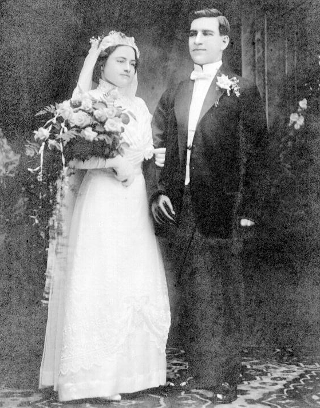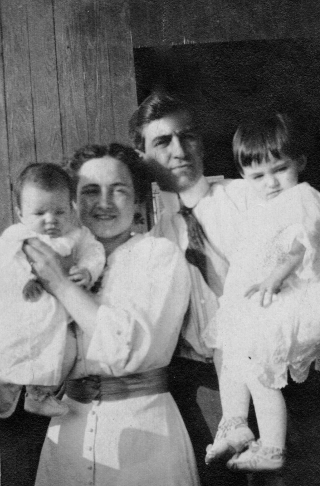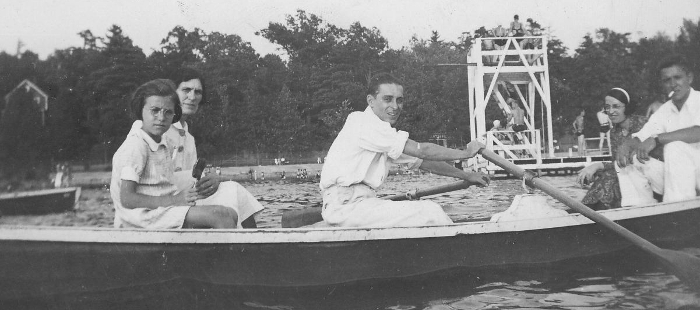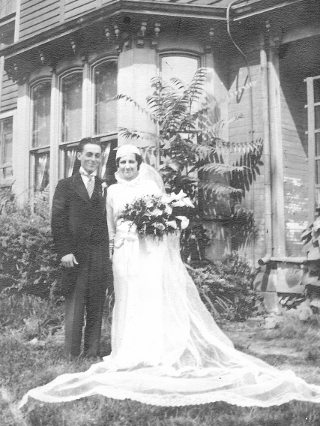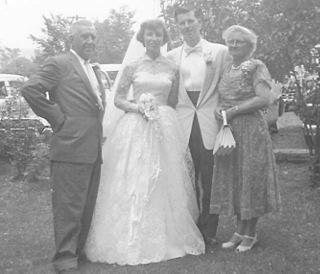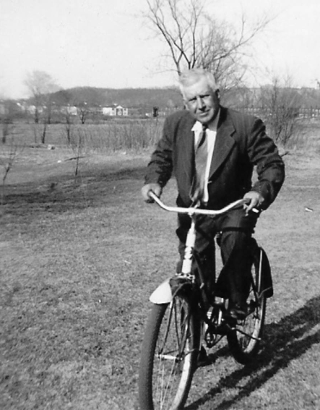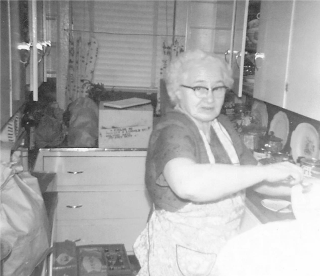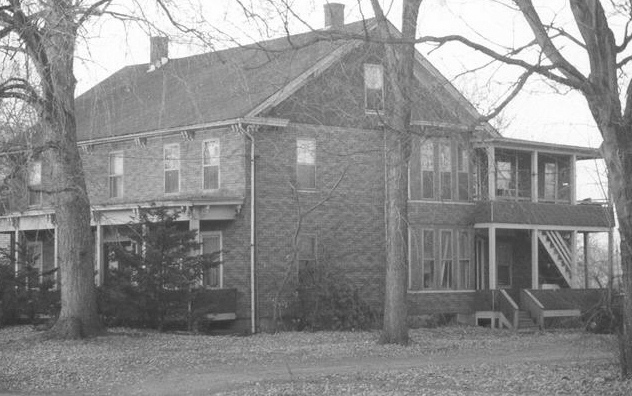History of the Albert & Alvina Boutin Family
Fifty five years ago, the worst Connecticut River flood of the century inundated the valley and two years later a hurricane forced the evacuation of residents of Chicopee St. and adjoining roads. Many of the people including the Boutins were evacuated to an unused hospital on the heights of Aldenville. This hospital later became an American Legion Post.
This Legion Post was chosen as the first site of a family reunion and an additional hall in Willimansett Heights was also reserved. At this hall in 1963, Pop and Mom Boutin were feted on their fiftieth wedding anniversary.
With the reunion on hand, a hearty welcome is extended to the descendants and wonderful persons related through marriage who have gathered here on these memorable occasion. May our day be happy with cherished memories.
Alvina Marie Labrecque and Albert Joseph Boutin met as teenagers when the Labrecques came to Chicopee from Quebec. The two young people had a lot in common including the same age. After a courtship of approximately five years they were married on June 24, 1913 at the Assumption Church in Chicopee.
Mom was religious in upbringing and tried by example to lead the children in the right path. When that did not succeed, she was not averse to using more forceful means. Every evening the family prayed together.
She was an excellent cook and seamstress, remodeling and handing down most clothes. It was amazing how she could concoct meals out of very little. She canned vegetables and berries that the boys picked.
All the children were born at home and, when grown up and married, were always welcome for a meal or an overnight stay.
Pop, in the early years of marriage, had an ice business when that was the main source of refrigeration. With the coming of electrical cooling, the business dwindled, forcing a change of employment.
Like his brothers and sisters, Pop played the piano and he needed little urging to pound the keys leading the group in song. The older children remembered him as an imaginative storyteller propping one on each knee.
After struggling through the Depression with Mom, he regretted not being able to leave a good financial legacy to his children. Actually, the family he left behind was the best legacy one could hope for.
Center Street – Rockrimmon, Chicopee (1913-1918)
The young couple started life living with Adolph and Sarah Boutin, Pop’s parents. The apartment was on the second floor of a three-story block and it comprised five rooms. When the first three children were born it became crowded, and when the fourth came, it was time to move. They did return for Grandma’s cures, her dinners and tidbits for the children.
Fortier’s Pond, Chicopee (1919)
That spring and summer, they rented a small summer cottage at the pond next to a sandbank. Alvina was four, Albert three, Gilbert one, and Hilda was the baby. There was an ice storage house by the pond and Pop in conjunction with his ice delivery business purchased the entire winter’s harvest. Using his horse and wagon for transportation, things looked promising. Then calamity struck–due to insufficient sawdust insulation, the stored ice melted. The resulting financial loss was one from which Pop never fully recovered, especially with the growing family.
Glenwood (1919)
This was intended to be a brief stop to pass the winter. It was a quiet residential neighborhood next to beautiful Van Horn Park. However, it was an inappropriate site to conduct a business.
Parker Street – Sixteen Acres, Springfield (1921-1929)
In Sixteen acres on the outskirts of Springfield, they lived on a farm with the essentials–a barn, horse, cow, pigs, chickens, a cat and a dog. The wooden house was simply constructed, four rooms on two floors, the parents sleeping downstairs and the children on the upper story. A stove in the kitchen was used for cooking and heating, the fuel coming from a wood lot. A hand pump on an iron sink supplied water and the toilet was an outhouse, somewhat removed with the usual catalog nailed to the wall.
There was a piggery about a mile south and the aroma indicated the garbage wagon’s passage. About a half mile in the opposite direction was a typical little red schoolhouse. It had two classrooms on separate floors with several grades conducted together. Alvina was enrolled in the first grade and the boys in kindergarten. Shortly, George was born to keep company with Mom and Hilda. He was the only one born outside of Chicopee.
Pop worked as a part-time farmer when his ice delivery route was finished. A Model-T truck had replaced the horse but the animal was kept around helping with the plowing and giving rides to the children.
Bass Pond, a short distance in the back, was a popular fishing spot which Pop used in this manner and also for family dips. In winter, of course they harvested ice, storing it in the usual icehouse.
Mom raised chickens and on special occasions fowl graced the table. She pressed clothes with flat irons heated on the stove. On cold nights these were heated, wrapped in towels and used as foot warmers.
A big treat was taking a trolley ride to the city even though that meant a long walk to the last stop on Wilbraham Road beyond the school. Generally the family picnicked at Forest Park using the wading pool and visiting the zoo.
Center Street, East Side – Rickrimmon, Chicopee (1926-1934)
The family returned to Chicopee, settling on the first floor of a six-tenement block in the middle of a peninsula of similar blocks. The view to the west was tremendous and overlooked the B & M railroad, the Connecticut River and the farmlands of West Springfield. Southward down Center Street Hill was a half-mile of open space leading to the city line. But the best side in the children’s opinion was the east with its gradual hills and sandbanks ideal for hiking and searching for berries. In winter the sliding was excellent.
This was a close knit community with much socializing and many children. Pop often used his truck on Sundays to transport friends to Becket in the Berkshires for blueberry excursions. Riding in the back on benches, it was a long ride, but made lively with laughter and song. A highlight of the Fourth of July celebration was an after-dark walk to the top of the sandbank to observe the display of fireworks emanating from Van Horn Park. That and a huge bonfire brought loads of excitement. Lee, Pauline and Ernest were born.
The trolleys ran by the house often and continuing to the morning hours, offering inexpensive transportation.
The family moved to Front Street where Terry, Claire and Armand were born completing the roster. Coincidentally, this was the same mill block that Mom lived in when she came to the States. The apartment consisted of ten rooms covering four floors. It created much stair climbing but furnished abundant living quarters. There were no hall lights, so getting to bed late at night was sometimes a scary adventure.
During this period the big depression hit the nation and Pop, along with most other workers, found himself jobless–prospects were bleak or nonexistent. It was about this time that Canada was seeking homesteaders for the province of Saskatchewan. It offered transportation and a seasonal job in the wheat fields to anyone interested in homesteading. Along with his brother-in-law Hormisdas Moreau and many others, Pop gave it a try.
Meanwhile, Mom carried on the family duties ably assisted by Alvina, who was now a teenager. They managed surprisingly well.
Late that fall, without any announcement, Pop returned. He surprised Mom not only with his sudden presence but with a mustache he had grown. After the initial warm greeting, Mom insisted that the mustache be shaved. Later after a long discussion they decided to forego homesteading.
Pop tried again, taking Al with him to seek jobs in the silk and rayon mills at Putnam Conn. and Webster Ma. They found work on the afternoon and night shifts, living in a boarding house and doing some light housekeeping. Pop came home about every other week while youthful Al hitchhiked back on weekends.
Chicopee Street, Stone House (1934-1935)
It was a short stay at this red picturesque colonial farmhouse with ten acres stretching to the river. The rambling seven-room house had two inner staircases and seemed filled with memories. Everyone loved it.
An improvement over Sixteen Acres was a modernized outhouse allowing visits without going outside. Of course it was just as cold.
A huge barn in the rear was used by the boys for basketball while the girls explored the many tiers above dreaming of barn dances that doubtless took place many years before. Alvina was married here with a reception on the vast lawn with its many trees.
Proving that all things must come to and end, the property was put up for sale. Since the asking price was out of reach, the family again had to move. However, this was to be the last time.
Chicopee Street, Stedman House (1935-1972)
The Stedman house dating back to the 1800’s was the only home actually owned by Alvina and Albert Boutin. They spent the last thirty-seven years of their lives here as its occupants. It was the family home and the focus of activities.
Originally, it was the main building of a large farm extending to the back hills. Before changes were made, it consisted of twelve rooms, eight fireplaces, two inner staircases and a kitchen large enough to hold dances. There was a large attic, its beams held together with wooden pegs and two large chimneys protruding through the roof.
A long porch in the front was a favorite spot on a warm after noon or evening for chatting, observing and sometimes harmonizing in song.
With the exception of Alvina, all the marriages and most other events took place while the family lived here. Mom always seemed available for babysitting and, even though it was sometimes an imposition, she never complained. Often at special occasions she cooked dinner with three tables set up in the kitchen.
At some time Alvina, Gilbert, George, Terry, Claire and their families lived in converted apartments upstairs. They helped Pop with his chores and also assisted Mom.
After Mom and Pop died, the house was sold, leaving only nostalgic memories.
Click here for Historical Information about the Boutin Family from the Boutin Association of America (French)
Click here for an archived version (English)
Surnames of Direct Connection to the Albert & Alvina Boutin Family:
LABRECQUE, LECLAIRE, DUPONT
SENECAL, STOPERA, TUBBS, DAVIES, CAMIDGE, PETRONE
